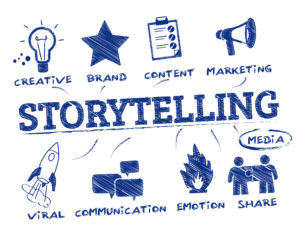Everywhere in today’s business world is the word Storytelling. You hear all the “experts” say…”Tell Your Story” or “Are you Telling Your Story Correctly?” But what does that mean?
Look, telling your company’s or brand story is critical in today’s business environment. Attention of consumers is at best “lacking” and if you’re not capturing their attention through stories or what I like to call “Brand Journeys” you’re losing. Telling your company’s story takes your Audience on journey, builds trust, and can inspire consumers, employees, and partners.
So how do you do it? I’ve put together 5 Simple Steps to consider when building your brand’s story and creating your Brand Journey.
